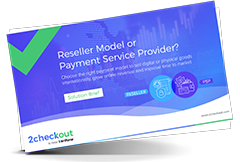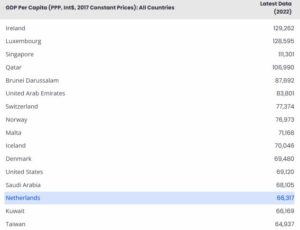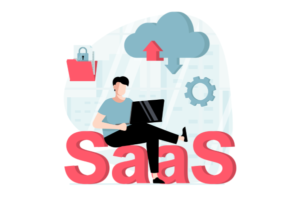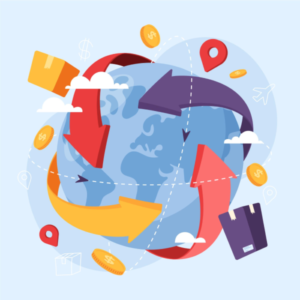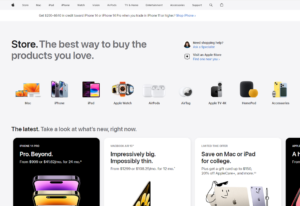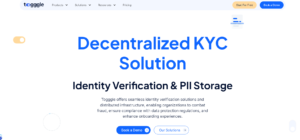Software as a Service (SaaS) is a cloud-driven model that allows users to access applications via a web browser, eliminating the need to install software on individual computers or enterprise networks. These applications range from office suites to unified communication tools and other business-centric programs.
Currently, the SaaS sector is witnessing robust growth, with significant potential in emerging markets. However, capitalizing on these opportunities needs a thorough understanding of their distinct challenges.
In this article, we will cover the nuances of SaaS in emerging markets, providing insights, trends, and forecasts for 2024. We’ll also look at crucial sector challenges and how to identify and capitalize on potential opportunities in these regions.
Let’s jump right in!
Brief Overview of the SaaS Industry’s Growth in Recent Years
The SaaS industry has witnessed explosive growth in recent years, evolving into one of the most dynamic sectors in the tech industry.
In 2022, SaaS had a $ 237.48 billion market value, demonstrating the significant demand for this service-delivery model across various sectors and geographies.
This popularity stems from the numerous advantages SaaS offers, including cost-effectiveness, scalability, accessibility, and flexibility, which have been vital for companies navigating the digital transformation process. And the sector does not show any signs of slowing down either.
Forecasts suggest the SaaS market will continue its upward trend with approximately 18.7% CAGR from 2023 to 2030. And if these predictions are accurate, the industry’s value will increase nearly four-fold over this period, reaching an impressive $908.21 billion by 2030.
Several factors are driving this growth. For instance, the shift to remote work due to the global pandemic accelerated the adoption of cloud-based solutions and SaaS products.
Moreover, there’s growing recognition of SaaS’s strategic role in improving business operations, which will continue to contribute to the industry’s expansion.
For more insights, let’s look at some reasons behind this astronomical growth:

Key Factors Driving the Adoption of SaaS Worldwide
Several key factors are driving the rapid global adoption of SaaS, but here are the popular reasons from both small business owners and Fortune500 executives:
1. Cost-Effective: First, SaaS simplifies IT structure and reduces costs by eliminating the need for hardware acquisition, provisions, maintenance, and software installation.
Under the SaaS model, end users and companies can subscribe to an offering and pay on a usage basis or on a per-seat basis, which can significantly reduce costs.
2. Scalability and Accessibility: SaaS allows you to easily scale up or down based on needs, making it highly flexible.
Additionally, since SaaS applications are delivered over the internet and don’t depend on having on-premise infrastructure, you can access them from anywhere, anytime, which is vital in an increasingly mobile and remote working world.
3. Short Implementation Time: Installing and configuring traditional software requires significant time and technical resources.
In contrast, the implementation process for SaaS solutions usually is easy and quick as the software is already installed and configured in the cloud. What’s more, most SaaS solutions come with straightforward on-boarding flows, which accelerates time to actually using the software.
4. Automatic Updates: SaaS providers automatically perform updates and patch management. This offloads the tasks from in-house IT, ensuring that the software is always up-to-date without requiring additional dev hours or causing downtime for the users.
5. Integration and Compatibility: Since all users are on the same software version, there are fewer compatibility issues. Additionally, many SaaS providers offer APIs, allowing customers to integrate with existing ERP systems or other business productivity systems.
6. Focus on Core Business: SaaS allows businesses, especially small to mid-sized ones without large IT teams, to focus more on their core business rather than IT infrastructure.
7. Data Analytics: Many SaaS products come with built-in analytics tools, providing businesses with valuable insights that can be used to improve their operations or offerings.
8. Environmental benefits: As an indirect benefit, SaaS is also more environmentally friendly than traditional software, requiring less energy for operation and contributing to reduced e-waste.
These benefits drive businesses worldwide to adopt SaaS as part of their digital transformation strategies increasingly.

Major Players and Regions Dominating the Established SaaS Markets
North America: The U.S. is home to approximately 17,000 SaaS companies, making it a dominant player in the market.
Some prominent players are Alphabet Inc, Amazon.com Inc., Microsoft Corporation, IBM Corporation, Salesforce Inc., Oracle Corporation, and Cisco Systems Inc.
Canada, with around 2,000 companies, also holds a significant market share.
Europe: Europe follows closely behind due to its large, diverse economy and the presence of tech players like SAP.
Notable investments like Google Cloud’s $1.2 billion investment in its German cloud computing program and SAP SE encourage local astronomical growth.
Asia-Pacific (APAC): A special note should be made about the Asia-Pacific region. Though it currently trails behind North America and Europe, its development pace gives it all the right premises for considerable expansion in the near future. The APAC is projected to show exponential growth, driven by the demand for increased resilience and agility across businesses.
China and India are leading the charge in cloud-driven space, thanks to their rapid urbanization, digital transformation initiatives, and the increasing adoption of advanced technologies by small and medium businesses.
For instance, Aqua Security Software Ltd. introduced a cloud security SaaS solution catering to most Asia Pacific regions.
NB: While North America and Europe lead in SaaS adoption, other regions are rapidly catching up, indicating a global trend toward digitization and cloud-based solutions.
Let’s take a close look at these emerging markets:

Understanding Emerging SaaS Markets
Emerging SaaS markets refer to regions or sectors where SaaS adoption and penetration are accelerating but have not yet reached their full potential or saturation. These markets typically have growing economies, expanding IT infrastructures, increasing internet penetration, and undergoing digital transformation. Due to their growth potential, emerging markets often offer significant opportunities for SaaS companies.
Although these markets may initially pose challenges such as regulatory complexities or differences in business practices, they tend to have less competition, allowing innovative SaaS solutions to meet largely unfulfilled needs.
Some signs of an emerging SaaS market include an explosion of startup activity in the sector, increasing venture capital investment, a growing educated and tech-savvy workforce, and government initiatives promoting digital transformation.
With the rapid globalization of technology and internet accessibility, markets that were once considered “off the radar” for many businesses are now ripe for SaaS adoption.
These include regions such as Asia Pacific, Latin America, Middle East, and Africa.
Similarly, sectors like HR, education, and healthcare that were slow to digitize are now emerging SaaS markets as they increasingly turn to these solutions for efficiency and cost-effectiveness.
Snapshot of Emerging Market Trend
Here’s a snapshot of the current trends:
Asia-Pacific (APAC)
Home to some of the fastest-growing economies, the region presents an enormous growth opportunity for SaaS.
According to Gartner, APAC’s public cloud services market grew 31.6% in 2020, with SaaS being the largest segment. Looking ahead, SaaS in APAC is predicted to reach $53.67 billion by 2026, growing at a CAGR of 34.28% from 2021.
Latin America (Latam)
With rising internet usage and mobile technology adoption, South America is poised for rapid growth in the SaaS market. Governments are encouraging foreign companies to establish businesses in the region, further boosting the demand for SaaS solutions. Within Latin America, Brazil is leading the adoption of SaaS solutions, followed by Argentina, Mexico, and Colombia.
According to a report from Frost & Sullivan, the Latin American cloud computing market is expected to reach $7.4 billion by 2022, with SaaS being a key component of this growth.
Middle East & Africa
This region is expected to show moderate growth, spurred by government investments in digitization and the availability of a wide range of data centers and managed service alternatives.
Africa, while starting from a smaller base, has exciting potential. Its younger population, rapid urbanization rate, and improvements in internet access are driving ICT growth. It’s estimated that the cloud services market could reach $3 billion by 2023, with SaaS accounting for a large part of this.
In summary, the booming digital economies in China, India, Brazil, and Africa indicate a global shift away from traditional on-premise software towards more flexible, cost-effective SaaS solutions. Despite the unique challenges of these emerging markets, the SaaS sector is poised to continue its robust growth trajectory.

Factors Contributing to the Emergence of New Markets:
Several factors are contributing to the emergence of new markets in the SaaS industry:
1. Digital Transformation: Businesses and governments increasingly embrace digital technologies to improve operations, deliver better customer experiences, and drive growth. With their scalability, flexibility, and operational advantages, SaaS platforms form a critical part of this digital transformation.
2. Improvement of Internet Infrastructure: Advancements in Internet connectivity, especially in developing countries, are a significant factor. As more people gain access to high-speed internet, the feasibility and benefits of SaaS become more attainable.
3. Mobile Technology: The unprecedented rise of mobile technology allows for software consumption on the go. Many SaaS applications are optimized for mobile usage, enabling access from anywhere, making them more attractive for businesses with remote or on-the-go employees.
4. Rapid Urbanization: Rapid urbanization, especially in emerging economies, has increased the number of businesses and startups requiring SaaS tools to manage their operations efficiently.
5. Cost Efficiency: SaaS platforms are more cost-effective than traditional software due to reduced hardware infrastructure costs, maintenance, and the subscription-based pricing model, which can often be scaled according to the business size.
6. Increase in Remote Work: The rise in remote working trends, accelerated by the COVID-19 pandemic, has necessitated using cloud-based collaboration and productivity tools—a domain where SaaS thrives.
7. Government Policies: In many countries, government policies promoting digitalization, internet accessibility, and data protection are accelerating the adoption of SaaS platforms.
8. Investments in IT and SaaS: Growing investment by venture capitalists into SaaS startups indicates recognition of the sector’s potential and can fuel further innovation and adoption.
9. Need for Agile and Scalable Solutions: Companies need solutions that can scale quickly with their growth in a fast-paced business environment. SaaS offers such agility, driving its adoption.
All these factors combined contribute to the massive surge in adopting SaaS solutions in new markets globally.

Challenges and Risks in Emerging SaaS Markets
While offering considerable opportunities, emerging SaaS markets also come with their own challenges and risks. Here are a few key ones to consider:
1. Data Security and Privacy: One of the primary concerns for businesses using SaaS is the security of their data since it’s stored on third-party servers. This concern is heightened in regions with stringent data protection regulations. SaaS providers must ensure their systems adhere to these regulations and offer robust data security.
2. Internet Connectivity: Reliable and fast internet connectivity is a prerequisite for accessing SaaS applications. However, in many emerging markets, internet infrastructure and connectivity might still need to be consistent, posing a challenge.
3. Local Regulatory Constraints: Different regions have rules and regulations around digital transactions, data privacy, taxes, etc. These pose challenges for SaaS providers trying to penetrate these markets.
4. Cultural and Language Barriers: Cultural differences and language barriers can affect the adoption of SaaS products. Ensuring the product caters to local languages and cultural nuances is crucial for success.
5. Pricing and Payment Methods: Emerging markets might be more sensitive to price points, requiring more affordable solutions. Also, preferred payment methods can vary across countries, so providing multiple payment options increases conversion.
6. Customer Support: Providing customer support in local languages and time zones can be challenging, especially in a diverse region.
7. Technological Readiness: The technological sophistication and readiness level among businesses and individuals can vary significantly in emerging markets. This might mean a slower adoption rate or a need to invest in educational resources and training.
While these challenges may seem daunting, they can be navigated with thoughtful planning and a customized approach, paving the way for success in these rapidly growing markets.

Strategies for Succeeding in Emerging SaaS Markets
Emerging SaaS markets present both opportunities and challenges for businesses.
To navigate these challenges successfully, you need to adopt specific strategies tailored to the unique dynamics of these markets.
Here are some of the key strategies:
1. Market Research and Localization
Customer-Centric Approach: Modern Go-To-Market (GTM) strategies prioritize the customer’s needs. By understanding your target audience’s preferences and pain points, you can deliver more value throughout the customer journey, moving them from initial awareness to brand advocacy.
Localization: To truly resonate with local audiences, SaaS companies must adapt their products to the cultural, linguistic, and functional expectations of each market. This involves translating content and understanding local customs, behaviors, and regulations.
2. Strategic Partnerships and Alliances
Alignment: Ensure that sales, marketing, and customer success teams harmonize. All stakeholders should be aligned around the same vision, culture, mission, and goals. A collaborative, data-driven environment is essential for this.
Revenue Operations (RevOps): RevOps is gaining traction in the B2B SaaS. It aligns sales, marketing, customer success, and finance, ensuring a seamless experience across the entire customer lifecycle. RevOps also aids in data management and tooling, providing a holistic view of the customer journey.
3. Customization and Flexibility
Product Strategy: Ensure your SaaS product meets the needs of your target customers. This involves conducting customer research, developing a product roadmap, and continuously improving your product based on feedback.
Pricing Strategy: Determine a pricing strategy that balances revenue generation with customer attraction. Offering free trials can be an effective way to let customers experience your product before committing to a paid subscription.
4. Building Trust and Credibility
Stay Agile and Adaptable: The SaaS sector is always evolving. Companies should be open to feedback and regularly review their performance. Staying updated with industry trends and new technologies is crucial.
Data Analytics: Leverage data to understand customer behavior, preferences, and pain points. This will help in refining strategies and making informed decisions.
Conclusion
In conclusion, succeeding in emerging SaaS markets requires a blend of research, localization, strategic alliances, customization, and trust-building. By adopting these strategies and staying agile, SaaS companies can navigate the complexities of new markets and achieve sustainable growth.
2Checkout addresses these challenges, offering insights into local payment methods, ensuring sales tax compliance, and handling local regulations. With support for over 45 local payment methods, marketing tools, conversion-optimized carts, additional sales channels and a market-validated reseller model that can get any business to start selling quickly in over 200 cross-border markets, 2Checkout provides a solid foundation for efficient regional expansion.
Learn more about our reseller model and get in touch with our team of commerce experts to see how our platform can help you take on new SaaS markets with ease.
- SEO Powered Content & PR Distribution. Get Amplified Today.
- PlatoData.Network Vertical Generative Ai. Empower Yourself. Access Here.
- PlatoAiStream. Web3 Intelligence. Knowledge Amplified. Access Here.
- PlatoESG. Automotive / EVs, Carbon, CleanTech, Energy, Environment, Solar, Waste Management. Access Here.
- PlatoHealth. Biotech and Clinical Trials Intelligence. Access Here.
- ChartPrime. Elevate your Trading Game with ChartPrime. Access Here.
- BlockOffsets. Modernizing Environmental Offset Ownership. Access Here.
- Source: https://blog.2checkout.com/emerging-saas-markets-trends-and-predictions/
- :has
- :is
- :not
- :where
- $UP
- 000
- 1
- 18.7%
- 200
- 2020
- 2021
- 2022
- 2023
- 2024
- 2026
- 2030
- 21 Billion
- 237
- 31
- 32
- 67
- 7
- 8
- 9
- a
- About
- accelerated
- accelerates
- accelerating
- access
- accessibility
- accessing
- According
- Accounting
- accurate
- Achieve
- acquisition
- across
- actually
- Additional
- Additionally
- addresses
- adhere
- adopt
- Adopting
- Adoption
- advancements
- advantages
- advocacy
- affect
- affordable
- africa
- agile
- ahead
- aids
- aligned
- Aligns
- All
- Alliances
- Allowing
- allows
- Alphabet
- already
- also
- alternatives
- always
- Amazon
- Amazon.com
- america
- American
- among
- an
- analytics
- analytics tools
- and
- any
- anywhere
- APAC
- APIs
- applications
- approach
- approximately
- aqua
- ARE
- Argentina
- around
- article
- AS
- asia
- asia pacific
- At
- Attainable
- attraction
- attractive
- audiences
- Automatic
- automatically
- availability
- AVG
- awareness
- away
- B2B
- balances
- barriers
- base
- based
- basis
- BE
- become
- been
- before
- behind
- being
- benefit
- benefits
- Better
- Beyond
- Billion
- Blend
- boosting
- both
- brand
- Brazil
- Building
- built-in
- business
- business practices
- businesses
- but
- by
- CAGR
- CAN
- Can Get
- capital
- capitalists
- capitalize
- capitalizing
- caters
- causing
- challenge
- challenges
- challenging
- channels
- charge
- China
- Cisco
- cisco systems
- Close
- closely
- Cloud
- cloud computing
- cloud services
- collaboration
- collaborative
- Colombia
- COM
- combined
- come
- Commerce
- committing
- Communication
- Companies
- compatibility
- complexities
- component
- computers
- computing
- Concern
- Concerns
- conclusion
- conducting
- configured
- Connectivity
- Consider
- considerable
- considered
- consistent
- constraints
- consumption
- content
- continue
- continuously
- contrast
- contribute
- contributing
- Conversion
- Core
- CORPORATION
- Cost
- cost-effective
- Costs
- could
- countries
- cover
- COVID-19
- COVID-19 pandemic
- critical
- cross-border
- crucial
- cultural
- Culture
- Current
- Currently
- customer
- customer behavior
- Customer Journey
- Customer Success
- Customer Support
- Customers
- customization
- customs
- data
- Data Analytics
- data management
- data privacy
- data protection
- data security
- data security and privacy
- data-driven
- decisions
- deliver
- delivered
- Demand
- demonstrating
- Despite
- Determine
- Dev
- developing
- Developing Countries
- Development
- differences
- different
- digital
- digital transactions
- Digital Transformation
- digitalization
- digitization
- digitize
- distinct
- diverse
- does
- domain
- dominant
- Dont
- down
- downtime
- drive
- driven
- driving
- due
- dynamic
- dynamics
- each
- ease
- easily
- East
- easy
- economies
- economy
- Education
- educational
- Effective
- efficiency
- efficient
- efficiently
- either
- eliminating
- emergence
- emerging
- emerging market
- emerging markets
- employees
- enabling
- encourage
- encouraging
- end
- energy
- enormous
- ensure
- ensuring
- Enterprise
- Entire
- Environment
- environmentally
- environmentally friendly
- ERP
- especially
- essential
- establish
- established
- estimated
- etc
- Ether (ETH)
- Europe
- evolving
- exciting
- executives
- existing
- expanding
- expansion
- expectations
- expected
- experience
- Experiences
- experts
- exponential
- Exponential Growth
- factor
- factors
- FAST
- fast-paced
- feedback
- few
- fewer
- finance
- Flexibility
- flexible
- Flows
- Focus
- followed
- follows
- For
- forecasts
- foreign
- form
- Foundation
- Free
- friendly
- from
- from 2021
- Frost
- Fuel
- full
- functional
- further
- future
- Gain
- gaining
- Gartner
- generation
- geographies
- German
- get
- gives
- Global
- globalization
- Globally
- Go
- Goals
- Government
- Governments
- grew
- Growing
- Growth
- growth potential
- had
- Handling
- Hardware
- Have
- having
- healthcare
- heightened
- help
- here
- highly
- holds
- holistic
- Home
- HOURS
- How
- How To
- However
- hr
- HTML
- HTTPS
- IBM
- ICT
- identify
- if
- implementation
- impressive
- improve
- improvement
- improvements
- improving
- in
- Inc.
- include
- Including
- Increase
- increased
- Increases
- increasing
- increasingly
- india
- indicate
- indicates
- indicating
- individual
- individuals
- industry
- industry’s
- informed
- Infrastructure
- infrastructures
- initial
- initially
- initiatives
- Innovation
- innovative
- insights
- installation
- installing
- instance
- integrate
- integration
- Internet
- into
- introduced
- Invest
- investment
- Investments
- involves
- issues
- IT
- ITS
- journey
- jpg
- jump
- Key
- language
- Languages
- large
- largely
- largest
- LATAM
- Latin
- latin america
- Latin American
- lead
- leading
- less
- let
- Level
- Leverage
- lifecycle
- like
- local
- Localization
- Look
- looking
- Ltd
- made
- maintenance
- Making
- manage
- managed
- management
- many
- Market
- market research
- market share
- market value
- Marketing
- Markets
- massive
- max-width
- May..
- McKinsey
- mean
- medium
- Meet
- Meets
- methods
- Mexico
- Microsoft
- Middle
- Middle East
- might
- Mission
- Mobile
- Mobile technology
- model
- moderate
- Modern
- more
- most
- moving
- multiple
- must
- Navigate
- navigating
- Near
- nearly
- Need
- needs
- networks
- New
- New technologies
- North
- north america
- note
- now
- number
- numerous
- of
- offer
- offering
- Offerings
- Offers
- Office
- often
- on
- on-boarding
- once
- ONE
- ones
- open
- operation
- operational
- Operations
- opportunities
- Options
- or
- oracle
- Other
- our
- over
- overview
- own
- owners
- Pace
- Pacific
- paid
- Pain
- Pain points
- pandemic
- part
- partnerships
- Patch
- Paving
- payment
- payment methods
- penetration
- People
- perform
- performance
- period
- platform
- Platforms
- plato
- Plato Data Intelligence
- PlatoData
- player
- players
- points
- poised
- policies
- Popular
- popularity
- population
- potential
- practices
- predicted
- Predictions
- preferences
- presence
- present
- presents
- price
- pricing
- pricing model
- primary
- Prioritize
- privacy
- process
- Product
- productivity
- Products
- Program
- projected
- prominent
- promoting
- protection
- providers
- provides
- providing
- Quick
- quickly
- range
- rapid
- rapidly
- Rate
- rather
- rating
- reach
- reached
- reaching
- Readiness
- reasons
- recent
- recognition
- reduce
- Reduced
- reduces
- refer
- refining
- region
- regional
- regions
- regularly
- regulations
- regulatory
- reliable
- remote
- remote work
- remote working
- report
- requires
- research
- resilience
- Resonate
- Resources
- revenue
- review
- RevOps
- right
- Rise
- rising
- risks
- roadmap
- robust
- rules
- s
- SaaS
- sales
- salesforce
- same
- sap
- Scalability
- scalable
- Scale
- score
- seamless
- sector
- Sectors
- security
- Security software
- see
- seem
- segment
- Selling
- sensitive
- service
- Services
- Share
- shift
- Short
- should
- show
- significant
- significantly
- Signs
- since
- Size
- slow
- Slowing
- small
- smaller
- Snapshot
- So
- Software
- solid
- Solutions
- some
- sophistication
- South
- South America
- special
- specific
- Spendesk
- stakeholders
- start
- Starting
- startup
- Startups
- stems
- Still
- stored
- straightforward
- Strategic
- Strategic Alliances
- Strategic Partnerships
- strategies
- Strategy
- structure
- subscribe
- subscription
- success
- Successfully
- such
- suggest
- SUMMARY
- support
- surge
- sustainable
- Sustainable Growth
- Systems
- tailored
- Take
- Target
- tasks
- tax
- Taxes
- team
- teams
- tech
- tech industry
- Technical
- technological
- Technologies
- Technology
- than
- thanks
- that
- The
- their
- Them
- There.
- These
- they
- third-party
- this
- though?
- thrives
- throughout
- time
- to
- tools
- touch
- toward
- towards
- traction
- traditional
- Training
- trajectory
- Transactions
- Transformation
- Trend
- Trends
- trials
- truly
- Trust
- TURN
- typically
- u.s.
- undergoing
- understand
- understanding
- unified
- unique
- unprecedented
- up-to-date
- updated
- Updates
- upward
- Usage
- used
- users
- using
- usually
- Valuable
- value
- various
- venture
- venture capital
- venture capital investment
- version
- via
- View
- vision
- vital
- votes
- Way..
- we
- were
- which
- while
- will
- with
- within
- without
- witnessed
- witnessing
- Work
- Workforce
- working
- world
- worldwide
- yet
- you
- Younger
- Your
- zephyrnet
- zones

